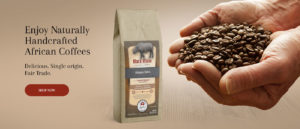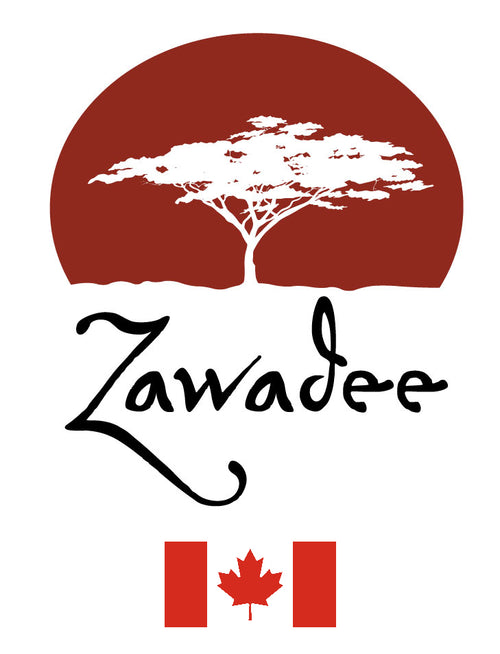Living On The Brink: The Omo Valley Tribes of Ethiopia
The Omo Valley in southern Ethiopia is as picturesque as it comes. Hills, mountains, rivers, graceful waterfalls, jungles and numerous exotic wild animals and plants all converge in this one area. The grand Omo River snakes through the region emptying in Lake Turkana at the Kenyan border.
 The earliest known discovery of human fossil fragments was found in the lower Omo Valley and Lake Turkana (which is mostly in Kenya). With this precious discovery, the area was declared a World Heritage site by the United Nations Educational Scientific and Cultural Organization (UNESCO).
The earliest known discovery of human fossil fragments was found in the lower Omo Valley and Lake Turkana (which is mostly in Kenya). With this precious discovery, the area was declared a World Heritage site by the United Nations Educational Scientific and Cultural Organization (UNESCO).
 Nestled in this beautiful setting are 15 tribal groups living in the hills and the banks along the Omo River.
It’s estimated that over 200,000 tribal people call the Omo Valley home. In this isolated corner of the world, these tribes have lived for centuries developing their own distinct and rich customs. Each tribe has different body markings, clothing, hairstyles and beliefs.
The Tribes
A diverse group of people live in the Omo Valley. But the various tribes in the region do share some commonalities, such as their reliance on the Omo River as an essential resource. Most tribes rely on the annual flooding of the river. Cattle, goats and sheep are also essential to most of the tribes’ livelihoods.
For the tribes, traditions are important and many involve some sort of body adornment or fancy headdress.
Nestled in this beautiful setting are 15 tribal groups living in the hills and the banks along the Omo River.
It’s estimated that over 200,000 tribal people call the Omo Valley home. In this isolated corner of the world, these tribes have lived for centuries developing their own distinct and rich customs. Each tribe has different body markings, clothing, hairstyles and beliefs.
The Tribes
A diverse group of people live in the Omo Valley. But the various tribes in the region do share some commonalities, such as their reliance on the Omo River as an essential resource. Most tribes rely on the annual flooding of the river. Cattle, goats and sheep are also essential to most of the tribes’ livelihoods.
For the tribes, traditions are important and many involve some sort of body adornment or fancy headdress.




 The earliest known discovery of human fossil fragments was found in the lower Omo Valley and Lake Turkana (which is mostly in Kenya). With this precious discovery, the area was declared a World Heritage site by the United Nations Educational Scientific and Cultural Organization (UNESCO).
The earliest known discovery of human fossil fragments was found in the lower Omo Valley and Lake Turkana (which is mostly in Kenya). With this precious discovery, the area was declared a World Heritage site by the United Nations Educational Scientific and Cultural Organization (UNESCO).
 Nestled in this beautiful setting are 15 tribal groups living in the hills and the banks along the Omo River.
It’s estimated that over 200,000 tribal people call the Omo Valley home. In this isolated corner of the world, these tribes have lived for centuries developing their own distinct and rich customs. Each tribe has different body markings, clothing, hairstyles and beliefs.
The Tribes
A diverse group of people live in the Omo Valley. But the various tribes in the region do share some commonalities, such as their reliance on the Omo River as an essential resource. Most tribes rely on the annual flooding of the river. Cattle, goats and sheep are also essential to most of the tribes’ livelihoods.
For the tribes, traditions are important and many involve some sort of body adornment or fancy headdress.
Nestled in this beautiful setting are 15 tribal groups living in the hills and the banks along the Omo River.
It’s estimated that over 200,000 tribal people call the Omo Valley home. In this isolated corner of the world, these tribes have lived for centuries developing their own distinct and rich customs. Each tribe has different body markings, clothing, hairstyles and beliefs.
The Tribes
A diverse group of people live in the Omo Valley. But the various tribes in the region do share some commonalities, such as their reliance on the Omo River as an essential resource. Most tribes rely on the annual flooding of the river. Cattle, goats and sheep are also essential to most of the tribes’ livelihoods.
For the tribes, traditions are important and many involve some sort of body adornment or fancy headdress.
 photo credit: Dassanech Girl, Omerate, Ethiopia via photopin (license)
photo credit: Dassanech Girl, Omerate, Ethiopia via photopin (license)
- The Mursi: The Mursi’s traditions include body painting, decorative scarring and piercing. Some Mursi women still hold onto the tradition of piercing and then slowly stretching their lower lip with a clay plate, up to 18cm (7in) wide. The lip plate is done to attract a spouse. There are few mirrors around so boys usually paint one another with elaborate designs. Mothers paint their babies, so the traditions start young.
- The Suri Tribe: The Suri use flora and fauna for decoration. They make elaborate head ornaments from leaves and branches.
- The Karo Tribe: The Karo paint their bodies and faces with white chalk to prepare for ceremonies. They sometimes wear face masks and clay hair buns with feathers stuck into them. The women sometimes scar their chests, believing it makes them beautiful. Men also scar themselves, representing an enemy or dangerous animal they’ve killed.
- The Hamar (also known as the Hammer or Hamer) Tribe: The Hamar people wear colorful bracelets and beads in their hair. Some women wear circular wedge necklaces to show they are married. Men wear hair ornaments to represent a kill of an enemy or animal. Men also paint themselves with white chalk for ceremonies.


Try our Ethiopian Micro-Lot Coffee - Small Batches, Single-Origin
Try our Ethiopian Micro-Lot Coffee - Small Batches, Single-Origin






 A self-admitted "coffee snob", she boycotts many of the more popular national coffee chains, claiming that what they sell is "just a warm, brown beverage" but not coffee.
She finds it hard to believe that people who will go to great lengths to buy the best wine for their dollar, don't apply the same logic to the coffee they consume on a daily basis.
A self-admitted "coffee snob", she boycotts many of the more popular national coffee chains, claiming that what they sell is "just a warm, brown beverage" but not coffee.
She finds it hard to believe that people who will go to great lengths to buy the best wine for their dollar, don't apply the same logic to the coffee they consume on a daily basis.



